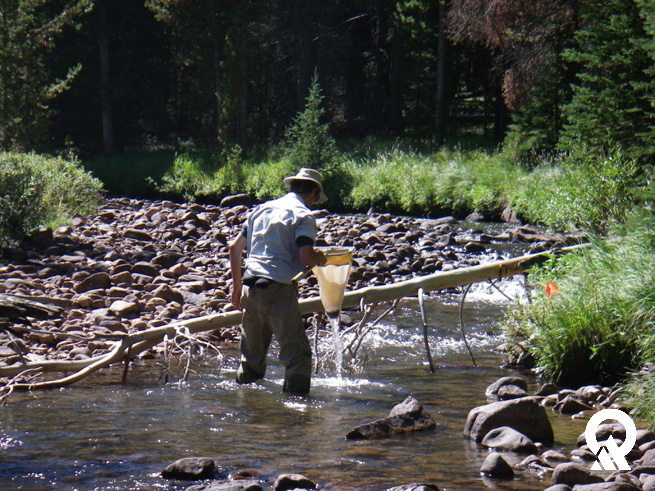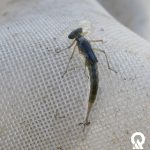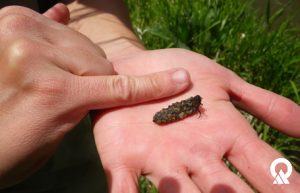By Amy Dickey
What’s the first thing most people do when they walk up to a stream? Perhaps they feel it to check the temperature. Maybe they toss a stick and see how far downstream the water carries it, or cast a line to see if the fish are biting. I prefer to grab a submerged rock, flip it in my hand and see what’s happening underneath. Fortunately for me, this is sometimes part of my job.

The Division of Water Quality (DWQ) assesses waters of the state for numerous parameters … metals, pH, temperature, bacteria, and more. It’s important to know the condition of the rivers and lakes around Utah so we can work to improve those that fall short of meeting water-quality standards. The standards are in place to protect for various uses including drinking water, recreation, fisheries, irrigation, and stock watering.

One way of assessing the health of a waterbody is to look at what macroinvertebrates are present and in what numbers. Benthic macroinvertebrates are small animals living among the sediments and rocks on the bottom of streams, rivers, and lakes. Insects comprise the largest diversity of these organisms and include mayflies, stoneflies, caddisflies, beetles, midges, crane flies, and dragonflies. Other members of the benthic macroinvertebrate community are snails, clams, aquatic worms, and crayfish. They are extremely important in the food chain of aquatic environments for fish and waterfowl.
While water chemistry samples are a good spot-check on an aquatic ecosystem to see what the condition is at the moment when the bottle is filled up and sent to a laboratory for analysis, macroinvertebrate populations can be a more accurate indicator of the overall quality of the water. Macroinvertebrates thrive under specific conditions, such as a certain range of pH, water temperature and dissolved oxygen concentrations. Some are quite tolerant of pollutants in the system, and others not so much. Additionally, although most macroinvertebrates live few months to a year in a waterbody, some can live up to three years and beyond, which gives DWQ a much better picture of what’s happening in the waterbody long before (and after) we dip the bottle for a sample.

Biological data are important in determining aquatic life beneficial-use support. DWQ has developed a model that assesses biological beneficial uses by quantifying the health of aquatic macroinvertebrate populations. Biological assessments compare the macroinvertebrates collected at a waterbody location to reference locations–places with limited human disturbance. DWQ employs the RIVPACS model (River Invertebrate Prediction and Classification System) to assess biological integrity. To quantify the biological condition of a certain waterbody, the model compares the presence of observed species (O) at a site to a list of expected species (E) that would be present in the absence of pollutant or habitat alterations. Waterbodies with low scores are included on the Utah 303(d) list of “impaired” waterbodies and targeted for studies to determine why they fail to support robust macroinvertebrate populations.
So next time you head out to your favorite river or reservoir in Utah, remember there’s often more than meets the eye, and those creepy critters under the rocks and in the mud can help tell the story.

I have worked with the Utah Division of Water Quality for 16 years. I have a Bachelor’s degree in Biology and Environmental Studies. When I’m not working, I love to get outside and enjoy all that Utah has to offer. I especially enjoy camping with my husband and two kids.

